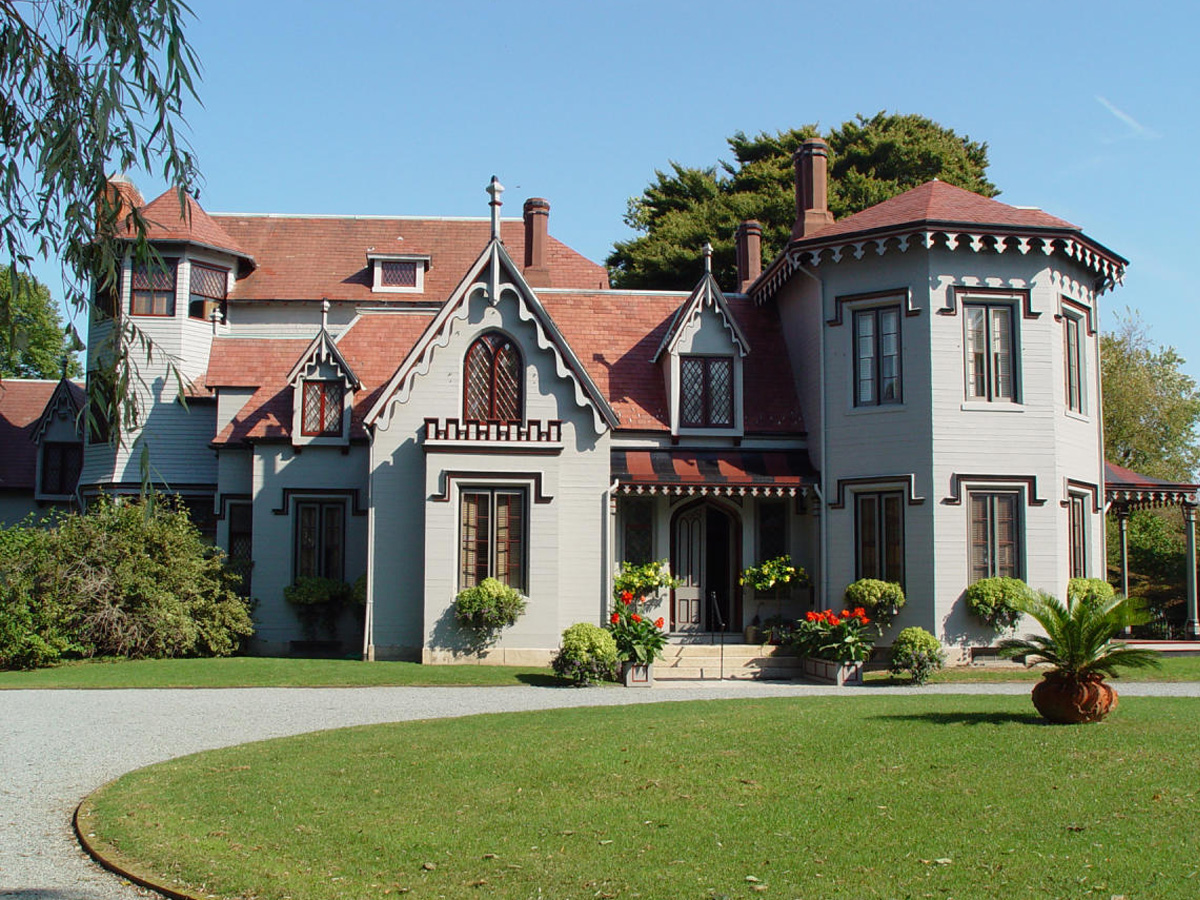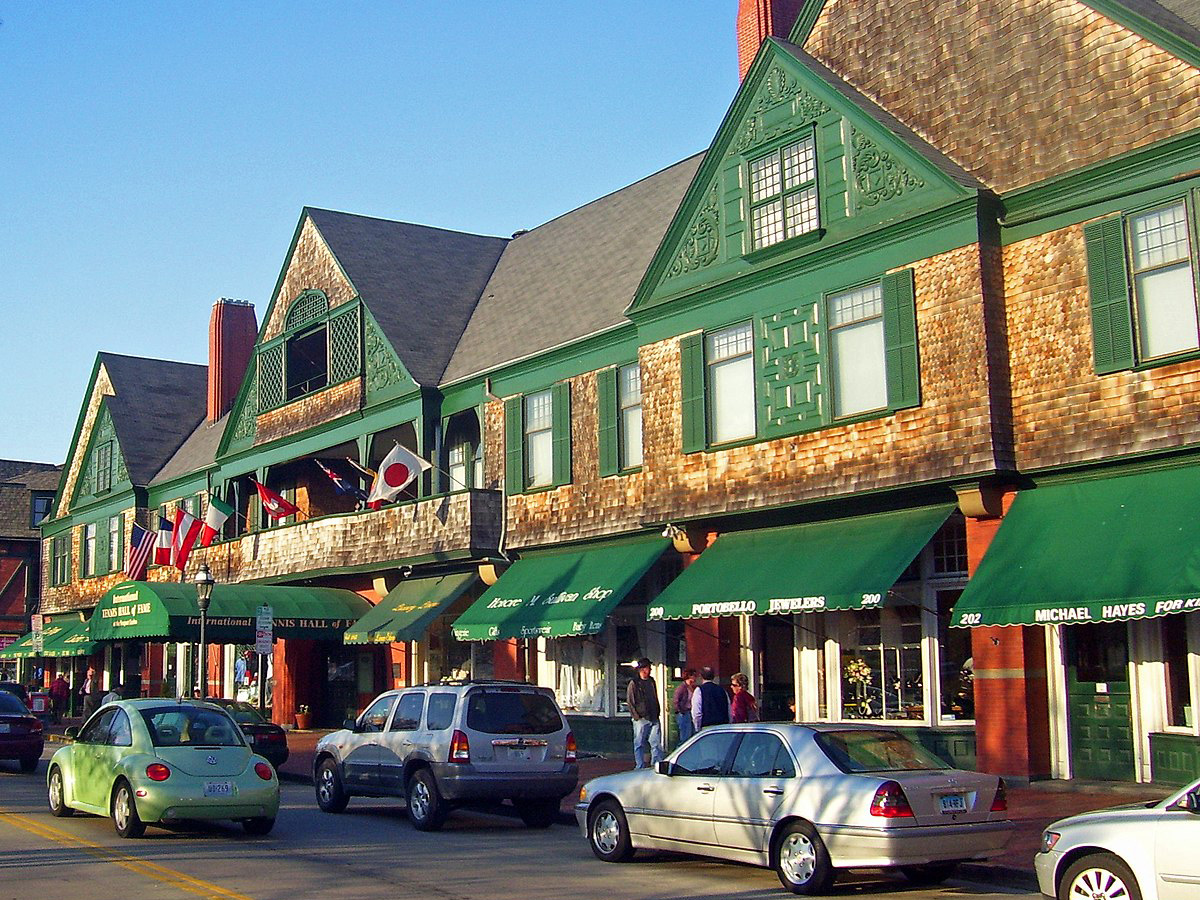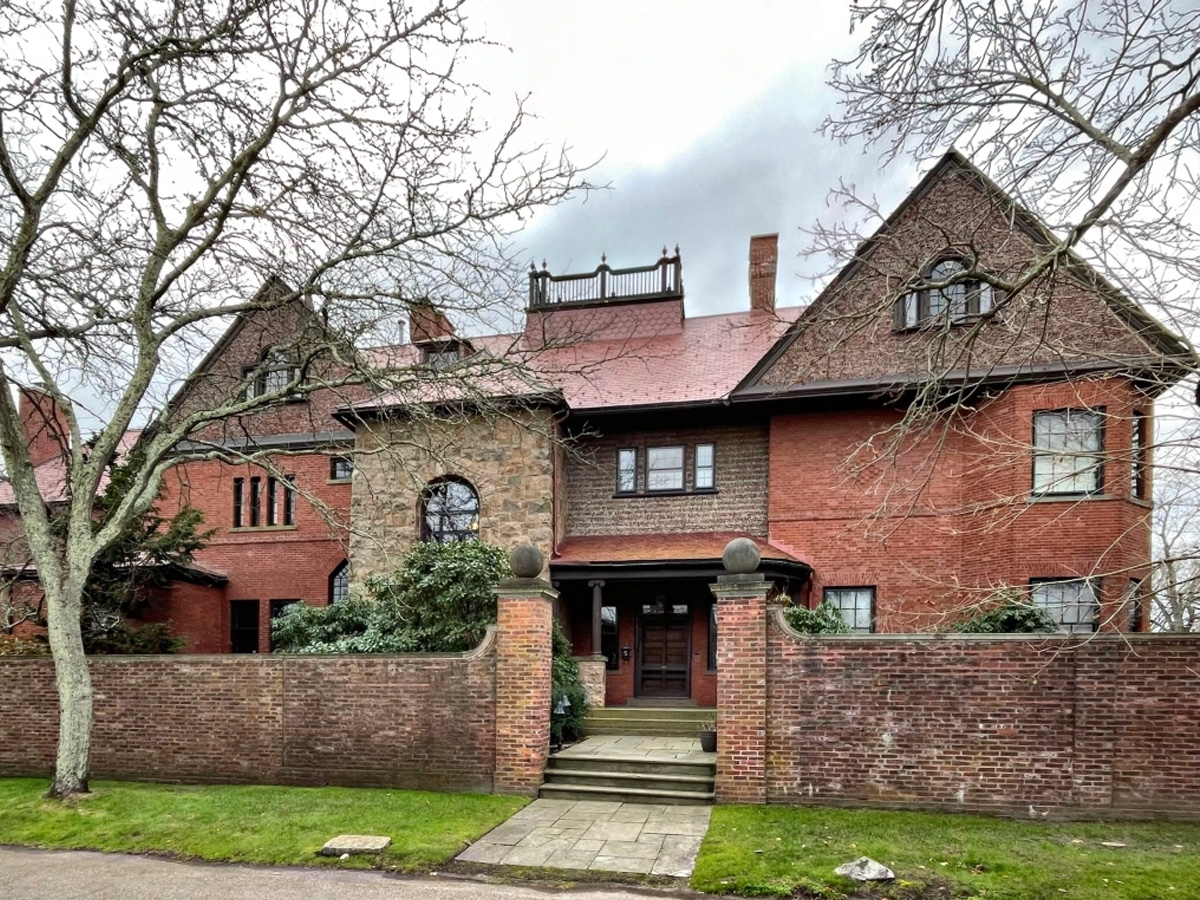Seeing pictures of architecture can be useful, but there is no substitution for seeing the real buildings firsthand. Fortunately, in Newport Rhode Island there are so many notable works of architecture that you can experience many important examples of the craft’s evolution all within a short walking distance. For the class on the Shingle Style that I am teaching as part of the Circle of Scholars program hosted at Salve Regina University, we are organizing a walking tour to see some of these magnificent works and understand their importance. We will be passing five different buildings that will take us through time from the previous era’s styles through what is arguably the first shingle style building, as well as other buildings representing the various points in the evolution of the Shingle Style.

Kingscote Mansion
The tour starts at Kingscote, which represents the period before the “Gilded Age”. It was designed by Richard Upjohn in 1845 in the period before Newport was the magnificent summer resort city it later became. This house was doubled in size in 1881 by McKim, Mead and White. It showed both the impact of the large fortunes that were arriving in Newport and the fact that MMW was beginning to work with and be inspired by more historic Newport architecture.

Charles Baldwin House
The second building on the tour chronologically is the Admiral Charles Baldwin house, designed in the “Queen Anne Revival Style” by Robert Robertson in 1876. This building, along with the Watts-Sherman house located further down Bellevue Avenue, both represent the epitome of the Queen Anne Revival Style, which the Shingle Style eventually emerged from.

Newport Casino
The third building on our tour is the magnificent Newport Casino. This is the building designed in 1879 by McKim, Mead and White that arguably began the Shingle Style as its first structure. It was also the very first country club designed in the United States and was the very first building designed by the now famous firm after the talented Stanford White had joined it. The freshness of the team, the novelty of the project, and the zeitgeist of the change to Newport on the eve of the Gilded Age are all factors which helped stimulate the inventiveness that created the Shingle Style.

Isaac Bell House
The fourth building on the tour chronologically is the Isaac Bell house. This building has been identified by Vincent Scully, the noteworthy late professor who coined the term “Shingle Style”, as one of the most important buildings in Newport. He believed that it had a profound impact on architects around the country, and he argued with even famous architect Frank Lloyd Wright. This building is the representation of the true flowering of the Shingle Style in Newport as well as other eastern resort communities during the Gilded Age. It also helped define the style that would be used by McKim, Mead and White as well as other notable firms like Peabody & Sterns. There are many other houses by MMW in Newport from the Shingle Style period including places like Villino, Sunnyside, Ochre Point, and Boxcroft among others. They continue to be widely studied and recognized by architectural historians around the world for their invention, creativity, and uniquely American flavor.

LeRoy King House
The last house on the tour, also by McKim, Mead and White, is the LeRoy King house designed in 1885 and completed in 1886. This building demonstrated how fleeting the first blossoming of the Shingle Style was in Newport. As the wealth of the new “summer colonialists” increased, so did the size and formality of the houses they wanted to construct. The LeRoy King house is built from brick and has two formal symmetrical gables, which are in sharp contrast to the highly asymmetrical shingled massing of the firm’s early works.
With just a few more years of practice, MMW’s work would be better known for its highly refined, formal, and highly decorated buildings like Rosecliff in Newport as well as other public structures in New York, Boston, and across the country. So, although they were the inventors of what was to become called the Shingle Style, they eventually migrated away from this informal and inventive typology while other architects around the country in resort and waterfront communities embraced it. More than 140 years after the Shingle Style was first invented, it has been revived and updated to become one of the most popular and prolific styles of architecture in the United States. As Vincent Scully described it, has gained a title through its respectability and gravitas over time as “The Architecture of the American Summer”.
Ross Sinclair Cann, AIA, LEED AP, is an author, historian, educator and practicing architect at A4 Architecture and lives and works in Newport, Rhode Island. He studied with Professor Scully as an undergraduate at Yale and was a teaching assistant for Robert A.M. Stern at the Columbia School of Architecture in New York. He has worked on dozens of buildings by McKim Mead and White, Peabody and Sterns, and other noted architects of the Gilded Age and has frequently designed renovations and new buildings in the Shingle Style.
